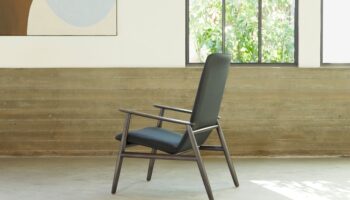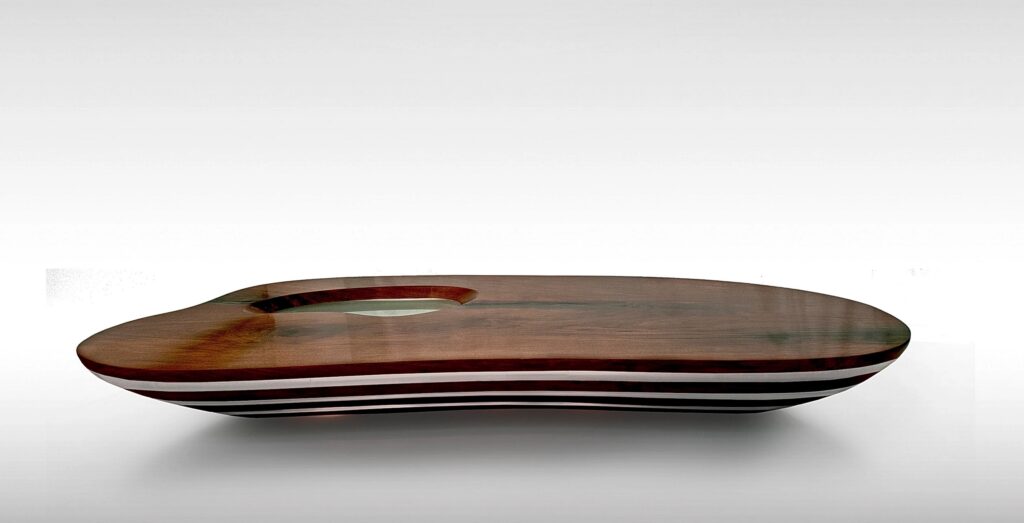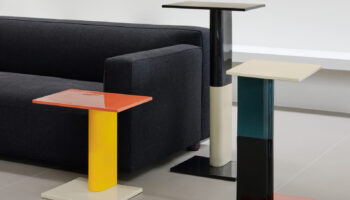On a Wing and a Prayer
Have you ever marveled at the shape of an airplane wing? Stared in wonderment at its high-polished sheen, its perfect rows of steel rivets, its sensuous fusion of curve and line? And have you ever witnessed the proverbial airplane graveyard? Your mood going melancholy at the bittersweet spectre of hordes of rusting B52s and oddly silent F4 Phantoms? The famed “Boneyard” at the Davis-Monthan Air Force Base houses planes for later use, in addition to re-purposing parts for other aircraft. Sadly, these former sky ships and gliders are ofter consigned to history’s dustbin…
Il Sole Conference Table. Designed by Giancarlo De Astis.
That’s where Giancarlo De Astis comes in. The L.A.-based designer joins the ranks of other 3rings notables (Skate Study House, Enviroglas, and Eric Johnston Wall Sculptures for starters) whose creations depend on re-purposed materials. But De Astis injects a new twist to this paradigm by making his raw material re-claimed airplane parts. Whether it’s a section of wing from a Beechcraft 18/C-45 (Latro Primo), a U.S. Navy A-7 Cockpit Canopy (L’uovo), or the air cooling engine scoop of a DC 6/7 (Il Sole), De Astis finds a way to turn the retired components into functional furniture with a never-before-seen aesthetic. The pieces don’t instantly say “airplane”: De Astis incorporates traditional materials-mahogany, cherry, aluminum, and velvet upholstery seem to be among his favorites-to find a distinct look for each.

The most famous of said creations, the Il Sole Conference Table, which goes for the nifty sum of $10,000 and has joined the esteemed ranks of The Smithsonian Institute's National Air and Space Museum, evokes early Bauhaus-its central structural component (part of the jet’s cooling fan) is displayed to excellent effect under a top of polished glass. The L’uovo, to the contrary, has the 60s whimsy of a Joe Colombo chair, while the Il Sole looks ready for this milenium and the next, its enmeshing of wing, wood, and glass an enviably artistic re-assemblage. So designers and artists take heed! We can all use the artifacts of the past to create the furniture of the future!




Leave a Reply